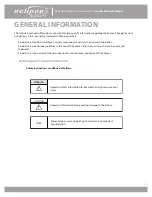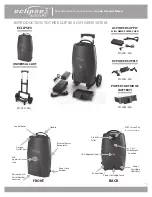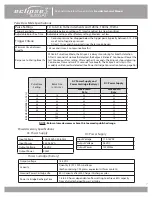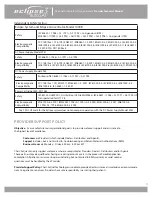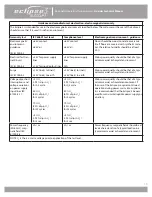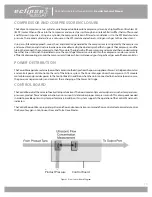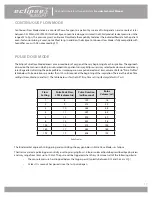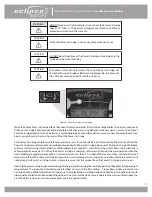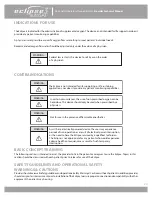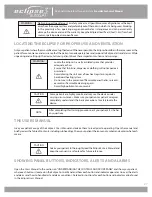
Personal Ambulatory Oxygen System
Provider Technical Manual
14
COMPRESSOR AND COMPRESSOR ENCLOSURE
The Eclipse Compressor is a two-cylinder, variable speed wobble piston compressor, driven by a highly efficient Brushless DC
(BLDC) motor. When air flows into the Compressor enclosure, it passes through an air intake filter/muffler that muffles sound
and filters out impurities. Using one cylinder, the compressor takes in filtered air and delivers it to the ATF Module under
pressure. The second cylinder draws a vacuum on the ATF module and exhausts nitrogen rich gas to the exhaust vent.
Using a multifaceted approach, sound, heat, and vibration generated by the compressor are mitigated by the compressor
enclosure. Vibration and structure-borne noise are addressed by the dual axis gimbal that supports the compressor and the
tubing that connects the compressor to the ATF module. The rigid walls of the compressor enclosure and the sound adsorbing
foam that lines it diminish the radiated noise. The centrifugal blower mounted within the compressor enclosure serves to
efficiently draw cooling air in over the compressor cylinders while simultaneously pushing exhaust gas out of the concentrator.
POWER DISTRIBUTION
The Power Manager takes external power that comes into the Eclipse from the power supplies or Power Cartridge and monitors
and controls power distribution to the rest of the Eclipse system. The Power Manager drives the compressor, ATF module
motor, blower, and provides power to the Control Board. In addition, when the unit is connected to an external power source,
the power manager monitors and controls the recharging of the Power Cartridge.
CONTROL BOARD
The Control Board is at the center of nearly all Eclipse functions. The board constantly monitors dynamics such as temperatures,
pressures, product flow and concentration, and user input. It determines proper compressor and ATF motor speeds needed
in order to provide optimum system performance. In addition, this system supports the operation of the Control Panel and its
indicators.
The Control Board utilizes a proprietary ultrasonic flow and concentration sensor and a flow control valve to accurately control
the flow of oxygen in Continuous Flow and Pulse Dose Modes.
Figure 2: Flow Sensor Board Diagram
Control Board
Product Pressure




